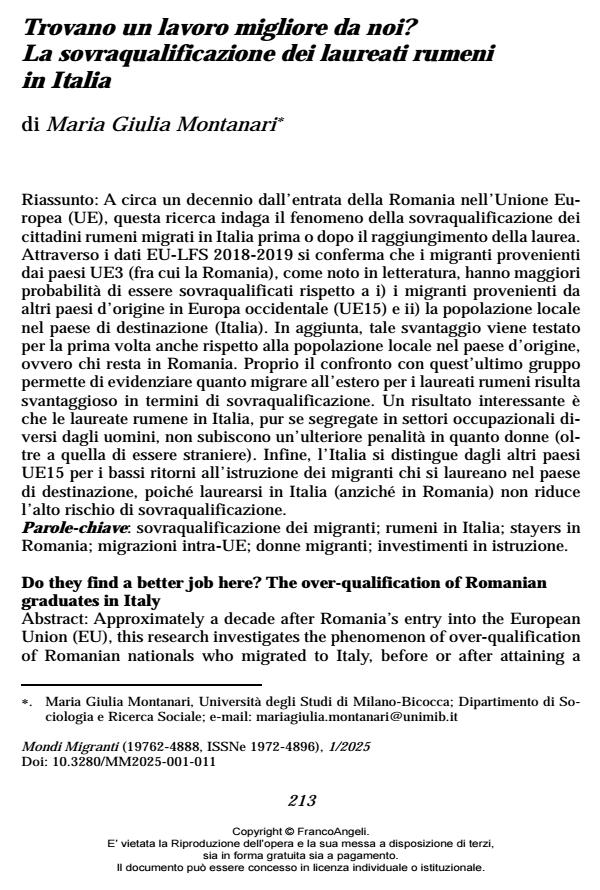Do they find a better job here? The over-qualification of Romanian graduates in Italy
Journal title MONDI MIGRANTI
Author/s Maria Giulia Montanari
Publishing Year 2025 Issue 2025/1
Language Italian Pages 31 P. 213-243 File size 187 KB
DOI 10.3280/MM2025-001011
DOI is like a bar code for intellectual property: to have more infomation
click here
Below, you can see the article first page
If you want to buy this article in PDF format, you can do it, following the instructions to buy download credits

FrancoAngeli is member of Publishers International Linking Association, Inc (PILA), a not-for-profit association which run the CrossRef service enabling links to and from online scholarly content.
Approximately a decade after Romania’s entry into the European Union (EU), this research investigates the phenomenon of over-qualification of Romanian nationals who migrated to Italy, before or after attaining a tertiary degree. Through EU-LFS 2018-2019 data, the analysis confirms that migrants from EU3 countries (including Romania), as well known in the literature, are more likely to be overqualified than (i) migrants from other origin countries in Western Europe (EU15) and (ii) the local population in the destination country (Italy). The novelty of this research consists in testing such disadvantage also against the local population in the origin country, i.e. the stayers in Romania. It is precisely the comparison with the latter group that allows to highlight how migrating abroad is disadvantageous for Romanian graduates in terms of over-qualification. An interesting result is that Romanian graduated women in Italy, although segregated in occupational sectors different from men, do not suffer an additional penalty as women (apart from that of being foreigners). Finally, Italy stands out from the other EU15 countries for the low returns to education of migrants who graduate in the destination country, since graduating in Italy (versus Romania) does not reduce the high risk of over-qualification.
Keywords: Over-qualification of migrants; Romanians in Italy; stayers in Romania; intra-EU migrations; migrant women; returns to education.
Maria Giulia Montanari, Trovano un lavoro migliore da noi? La sovraqualificazione dei laureati rumeni in Italia in "MONDI MIGRANTI" 1/2025, pp 213-243, DOI: 10.3280/MM2025-001011